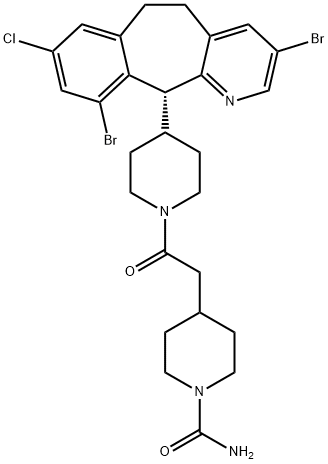Farnesyl transferase drives the post-translational farnesylation of a number of target proteins, including Ras, a component of the MAPK and Akt signaling pathways involved in cell proliferation, and Ras homolog enriched in brain (Rheb), which stimulates mTOR activity. By arresting growth, farnesyl transferase inhibitors have great potential as antitumor agents. Lonafarnib is a farnesyl transferase inhibitor that blocks the post-translational lipid modification of oncogenic Ras isoforms H-Ras, N-Ras, and K-Ras (IC50s = 1.9, 2.8, and 5.2 nM, respectively) as well as Rheb (IC50 = 10-100 nM). It inhibits H-Ras signaling in whole cells (IC50 = 10 nM) and blocks the transformed growth properties of fibroblasts (IC50 = 75 nM) and human tumor cell lines (IC50 = 400 nM) expressing activated K-Ras proteins. In the nude mouse, lonafarnib demonstrates potent dose-dependent oral activity in an array of human tumor xenograft models including tumors originating from colon, lung, pancreas, prostate, and urinary bladder. Combination treatments with various cytotoxic agents (cyclophosphamide, 5-fluorouracil, and vincristine) or MAPK or Akt pathway inhibitors can enhance the in vivo efficacy of lonafarib.

